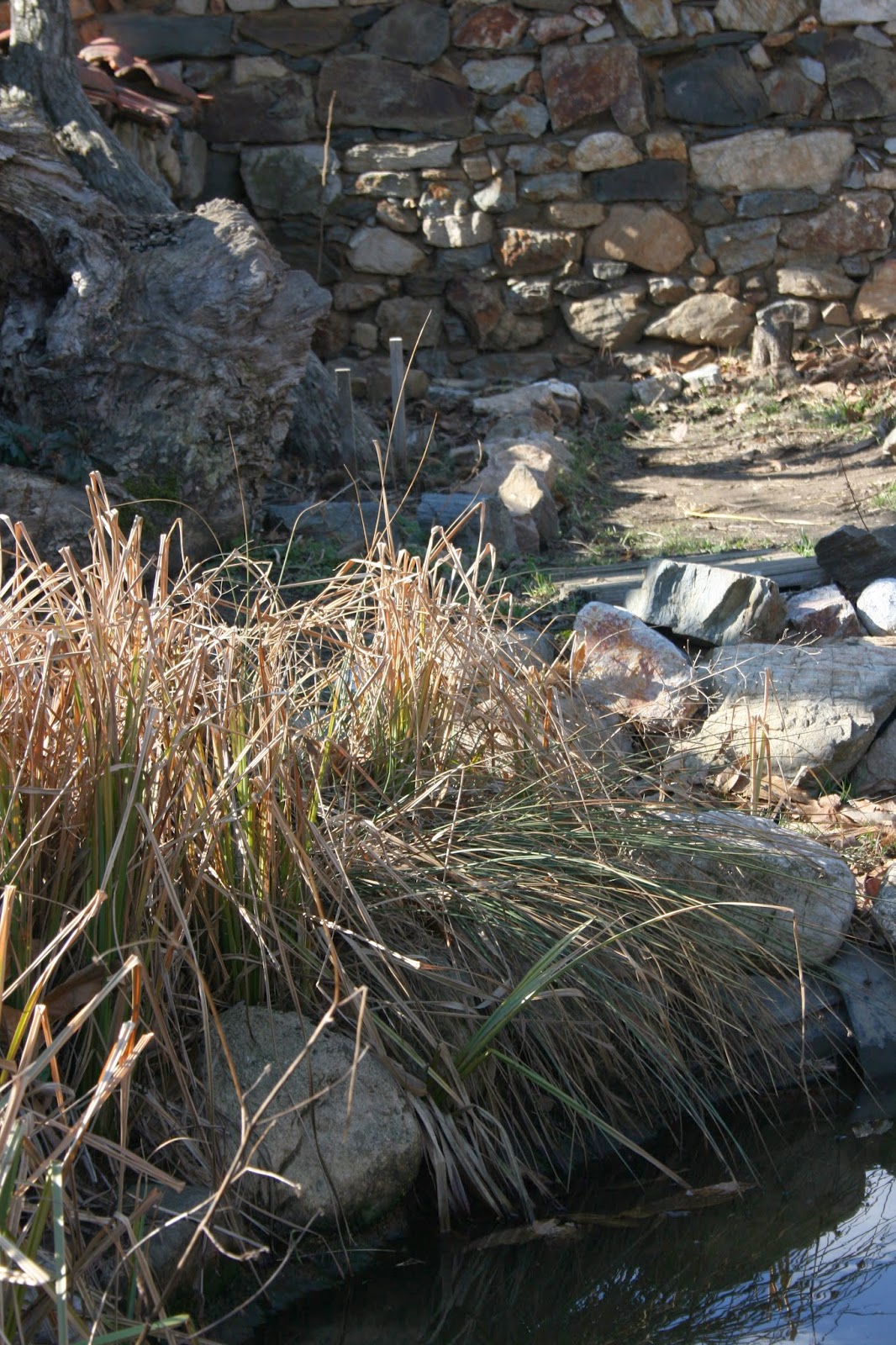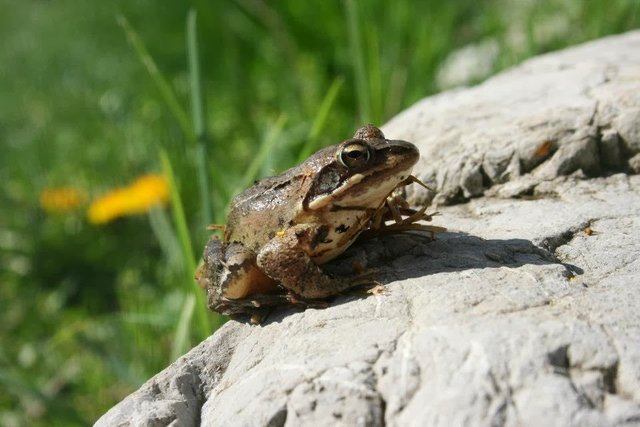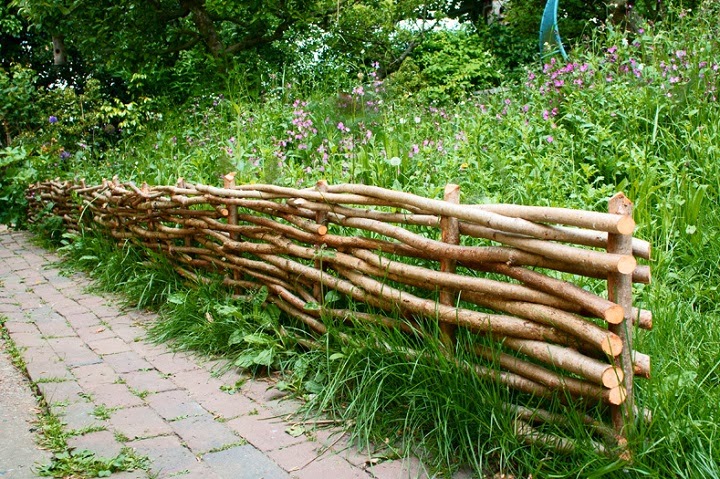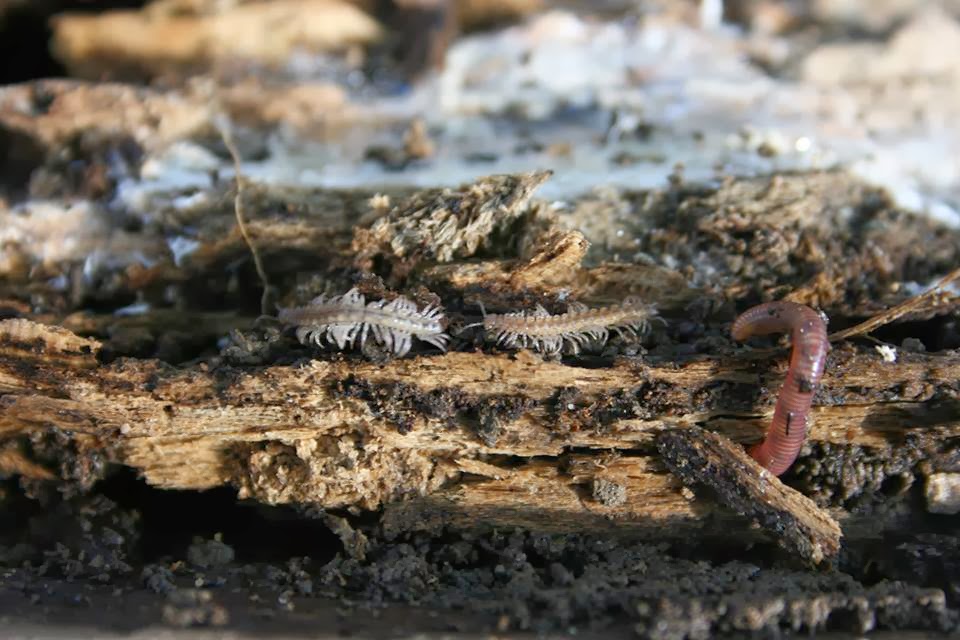Edging in the Ecological Garden
When faced with the prospect of developing a new site, a blank canvas so to speak, there is nothing quite like establishing the edges of your beds and borders to bring the project to life. Edging defines the area for cultivation and marks the point beyond where no Homo sapiens foot shall tread! If designed well, edging can serve as a beneficial asset to the general garden ecology whilst creating unity in the overall design, providing an aesthetically pleasing environment.
During this post we will look at what makes good edging, go through a selection of options and look at how to implement these and discover some beneficial interactions you can expect to observe.
What makes good edging ?
Good edging should clearly define the area for plants from the path. It should be both sturdy and high enough to retain the soil and mulch, and take the rising levels of soil that will inevitably establish in the ecological garden over the years. If your bed is bordering an area containing spreading plants that you would rather not have spreading then it should be able to prevent the rhizomes (underground stems) venturing beyond. Finally good edging should provide habitat for beneficial organisms and a slow release of fertility to the garden.
Rocks and Boulders
We live on the southern slope of the Central Balkan Mountains (Stara Planina) with a wonderful range of rocks. Where the rivers flow from the mountains into the lowlands, the waters bring with them boulders worn smooth from millennia of erosion. Further up the mountain, folded layers of rock appear to push through the soil. Exposed to the elements and vegetation they break apart along the horizontal fissures disintegrating into smaller and smaller pieces yielding perfect shaped rocks for dry stone walls.

Rocky edges in Winter
There are many ways to use rocks as edging, from artisan techniques to simply placing boulders around the bed. All methods will provide a sturdy border that looks great and provides excellent habitat for garden creatures. Rocks that break apart easily are not the best candidates and if using small rocks piled up without a mortar to bind them they will shift easily. Gaps between the rocks provide habitat to a wider range of organisms.
Ecology
Under and around the stones provide a moist dark environment conducive to the needs of many invertebrates and the uneven surface of the larger rocks provide nesting sites for spiders and mantids. The rocks also serve as a heat store and on sunny days make great basking territory for reptiles and amphibians such as lizards and frogs. The gaps between the rocks provide fast retreat shelter for these organisms when spooked by would be predators. A garden with many lizards, frogs and slow worms is a garden largely untroubled by slugs and snails.

Rana dalmatina - Agile frog basking on a bordering boulder
Wattle Edging
This one's a labour of love but well worth the effort as it looks wonderful and is easy to create smooth curves. Essentially you need stakes and rods to weave between the stakes. A lot of the work is in collecting the materials, but with a little forward thinking much of the material can be grown and harvested from your own garden.

Wattle fencing using Corylus avellana - Hazel
The Stakes
Some tree species yield timbers that are naturally resistant to biological decomposition containing substances which are harmful or toxic to microorganisms and invertebrates involved in the decomposition process. Using the wood from these trees is therefore preferable for stakes and fence posts averting the need to use harmful preservatives to protect the wood. The table below provides an overview of species that are considered to yield durable timber. Note that durability is generally variable depending on site, soil, climate etc. and the table indicates averages only. (Adapted from Agroforestry News Vol 1. No 3 ) - Agroforestry Research Trust
click here to see table - http://balkanecologyproject.blogspot.bg/2014/02/
I harvest poles from Robinia pseudoacacia and Gelditsia triacanthos both trees being locally available. I also grow Paulownia tomentosa and Catalpa bignonoides for use as stakes and fence posts. A wonderful attribute of these trees, along with many others, is that when cut to ground level dormant buds embedded in the stool(stump) regrow to form numerous stems. This is known as coppicing. These buds might also grow from the cambium layer of the cut stem. Most shoots come from above ground, but in some species they can emerge just below the surface. These stems generally grow at fast rates vertically and make excellent material for both rods and stakes.

Robinia pseudoacacia stakes and Sambucus nigra rods
For stakes I harvest wood with a minimum of 5-7cm diameter and cut them into 70cm lengths. I space the stakes approx 50 cm apart driving at least 30 cm of the stake into the ground with a sledgehammer. The thicker the stakes the more durable they will be. It helps to have the edging line marked before you start.
Weaving Rods
Durable timber qualities are not as important for the rod materials as they remain above ground and can easily be replaced. Basically you are looking for long, flexible tree suckers and saplings best cut fresh as they will become too stiff to weave soon after cutting. Corylus avellana - Hazel, Alnus glutinosa - Alder and Salix spp.- Willow all provide great rod material that regrows very quickly following being coppiced. Material from Grape pruning can be used along with any other pruning material.
I select material approx 1.5 - 2.5 cm in diameter in the longest lengths I can find and simply weave the rods through the stakes, alternating the weave direction for each piece and pressing each rod down firmly. The firmer you press the wattle down, the sturdier the fence will be. I trim the ends of the rods once they are all in place.
Ecology
If your wattle edging is high enough the post will serve as a perch for garden birds such as robins and tits who venture in for some tasty morsel in the vegetation. If you have cats in your gardens low perches will probably be avoided by the birds. The inevitable decomposition of the stakes in the ground will provide a good source of humus to the soil improving soil structure and increasing the ability of the soil to retain mineral nutrients (increased CEC).
Old Wooden Beams
We have local source of old Beech - Fagus spp. beams that are salvaged from the roofs of old derelict houses and barns. The beams that have large areas of rot or are infested with wood worms are not suitable for re- use but make great bordering material. Its a good choice particularly when you are not certain of the permanent position of your bed. The old wooden beams are easy to put in place and will slowly decompose into the bed. Over time if you are happy with the position of the bed you can establish a more permanent border to replace it.

A view under a beam
Ecology
Wood borders provides excellent habitat for a range of invertebrates including centipedes, millipedes, woodlice, worms and fungi as well as the not so welcome slugs and snails. It's difficult to ascertain the overall benefit of hosting such a range of creatures. For example, centipedes are predatory animals, although some species will take to nibbling the occasional plant root. They hunt a variety of other creatures including woodlice, harvestmen, spiders, mites, springtails, beetles and many other insects as well as slugs and worms. The centipede diet illustrates the problem of trying to organise garden animals into "friends" and "foes". By eating slugs and mites they provide a service but to what extent do they undo this good by eating useful spiders and worms? It's probably impossible to determine this accurately given the infinite variability of gardens but its probable that the animals do far more good then harm.
A certain benefit of many of these creatures are their role as decomposers releasing the minerals from the ligninfied wood and vastly improving the soil structure while they are at it. The released minerals are deposited in the soil where they become available to plants.